
The groups had a full summer and the tree-ring work was only one of their projects. They traveled by kayak, boat and floatplane across the region, sampling and taking notes on each tree they cored (various photos of the Kake and Angoon groups)

The Hoonah and Klawock teams shown measuring and coring and filling out the survey data.

The AYLS groups from Kake, Hoonah, Angoon and Klawock sampled an extensive portion of Southeast Alaska in the summer of 2021. The groups entered their data in to Survey 123 and Wooster students could check in each day and see the map populate with the sample sites.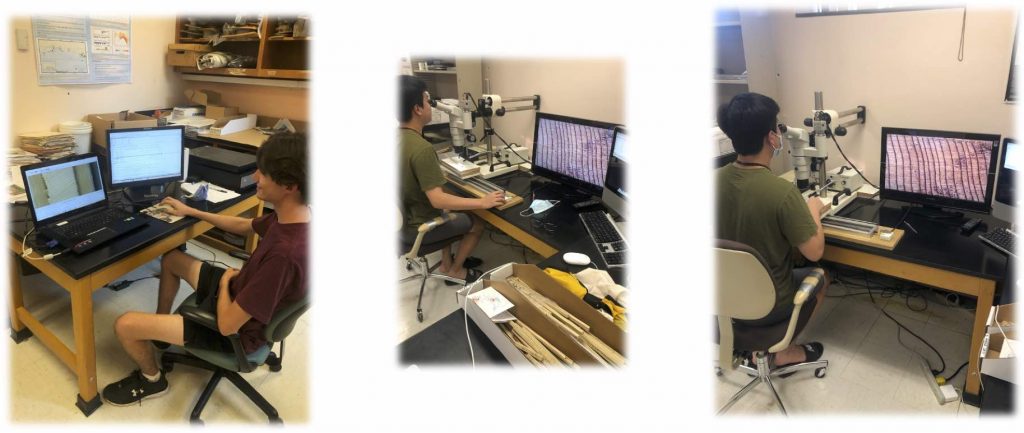
Representative samples from the AYLS groups. These are the first Red Cedar (far left) that the Wooster lab has worked with.
One of the tables showing the combined AYLS and Wooster data set. This was for the Prince of Wales group (Klawock). Three of the cedar trees are over 400 years old.
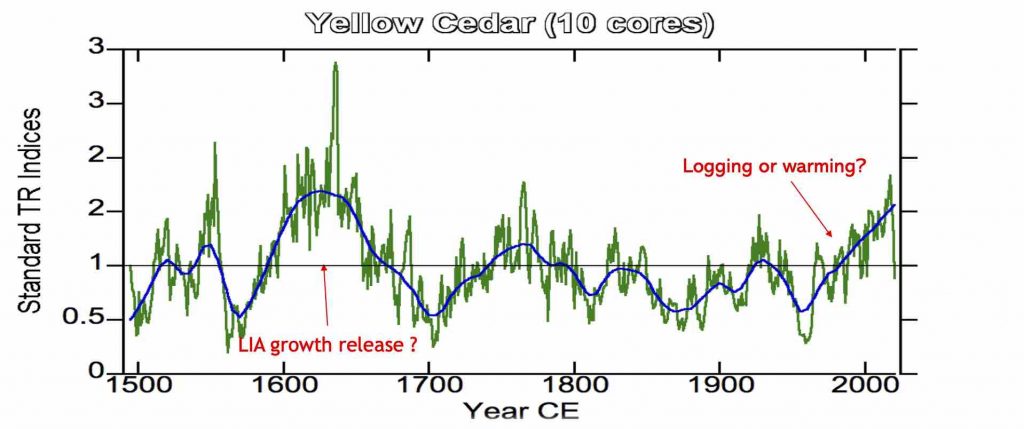
Some of the results included the Yellow Cedar tree-ring record above that brings the LIA (Little Ice Age) increase in growth and a recent release that could be related to warming or logging at a site on Prince of Wales Island.
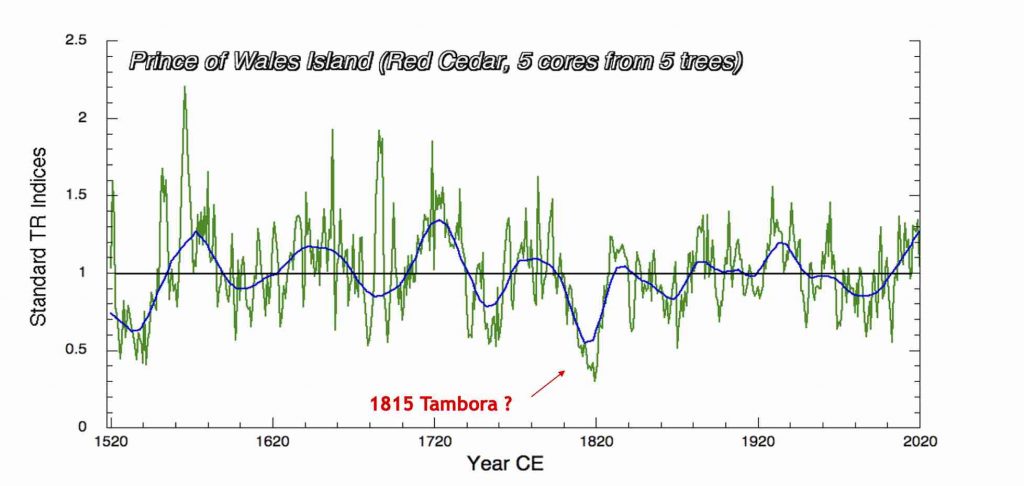
A red cedar chronology appears to record reduced ring-width shortly after the 1815 eruption of Tambora (1816 called the year without summer in Europe) – it may be that the volcanic event forces a change in ocean temperatures that then causes the cooling to persist. Further study is needed.
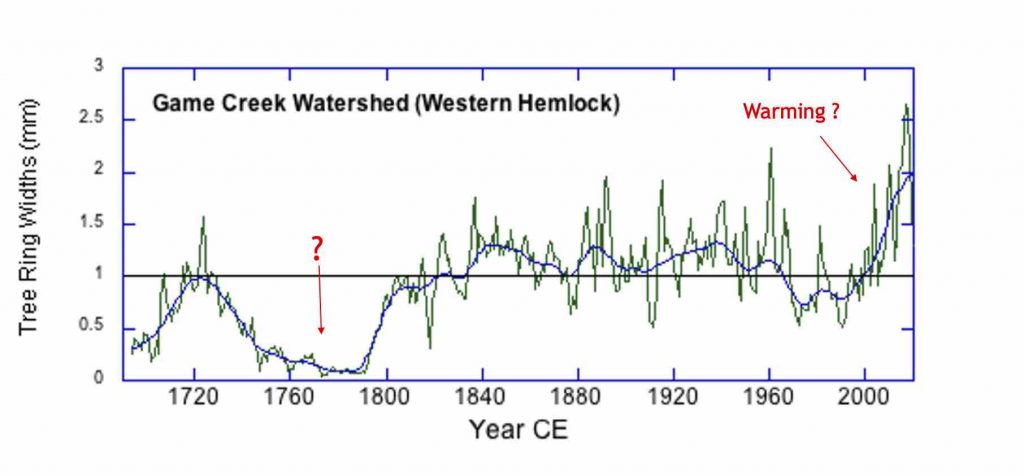
Tree-ring series from Hoonah – these western hemlocks show an interesting suppression of growth in the mid to late 1700s, a change that persists for some decades. Western hemlock here also appear to track the warming well. Again further analysis can test some of the ideas the groups generated about the changes in observed tree growth.
Next summer we hope to visit some of these sites and expand on this work, as well a s continuing our remote collaboration.
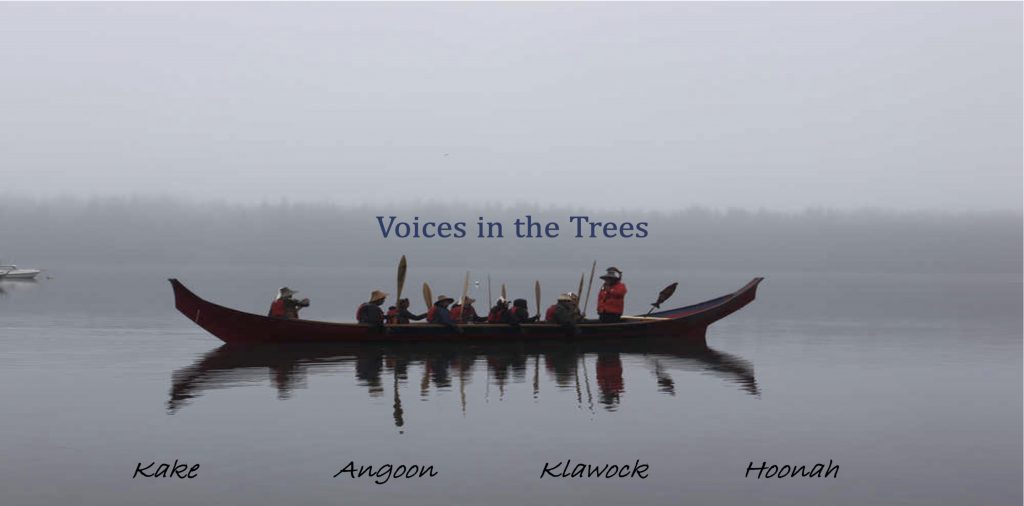
A 40-foot spruce dugout canoes carved in Hoonah by master carver Wayne Price, and apprentices Steven Price, Zack James (Tlél Tooch Tláa.aa) and James Hart (Gooch Éesh) arriving Bartlett Cove, Glacier Bay, Alaska. The trip from Hoonah marked the return of the Tlingit to their ancestral homeland in 2016. Image courtesy of the Juneau Empire, the full story is here.
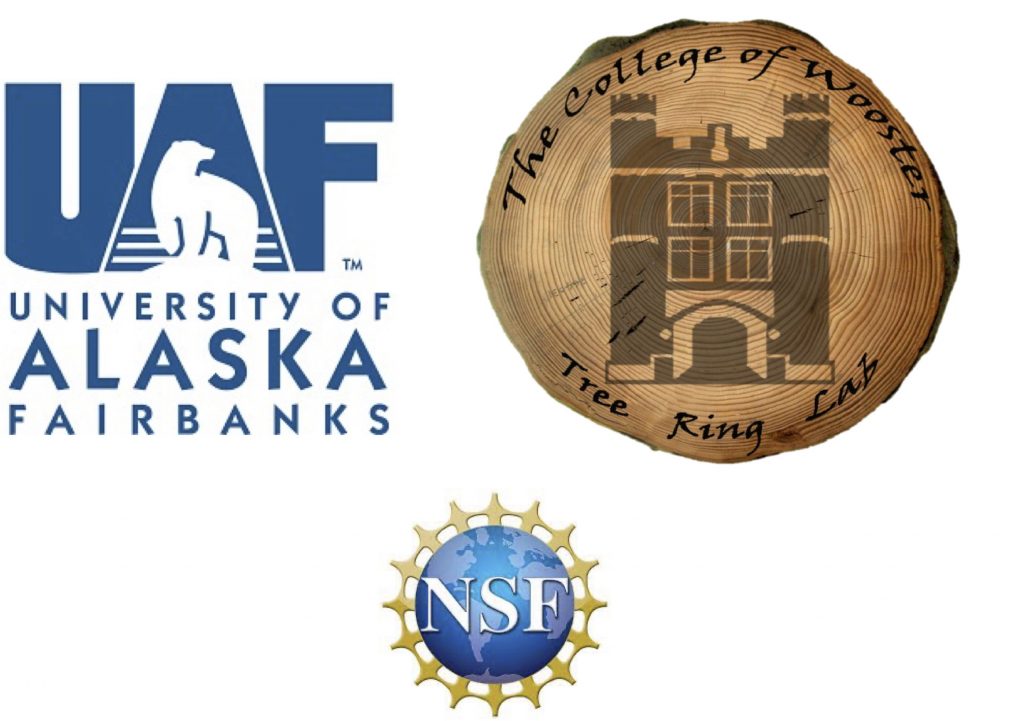
This project was funded by the National Science Foundation Paleoclimate Program (Awards: P2C2-2002561 and 2002454).





